22 Photos That Yet Again Prove College In The ’70s Was Absolutely Iconic
Ah, the 1970s—a decade that shimmered with disco lights, echoed with protest chants, and strutted confidently in bell-bottom jeans.
It was an era when lava lamps lit up dorm rooms and music blasted from vinyl turntables, setting the backdrop for a generation that danced, questioned, and dreamed big. I grew up hearing my parents’ stories of their college days—late-night debates over coffee, spontaneous campus concerts, and a cultural revolution that pulsed through every hallway and lecture hall.
As I flip through these vivid photos, it’s like opening a time capsule bursting with color, courage, and charisma. The ’70s weren’t just about trends—they were about transformation.
From Afro picks to protest posters, every image is a testament to a youth unafraid to speak out, stand up, and shake things up. So, crank up the Fleetwood Mac, dust off that tie-dye, and join me in reliving the wild, wonderful world of 1970s college life.
1. Bell-Bottomed Bliss
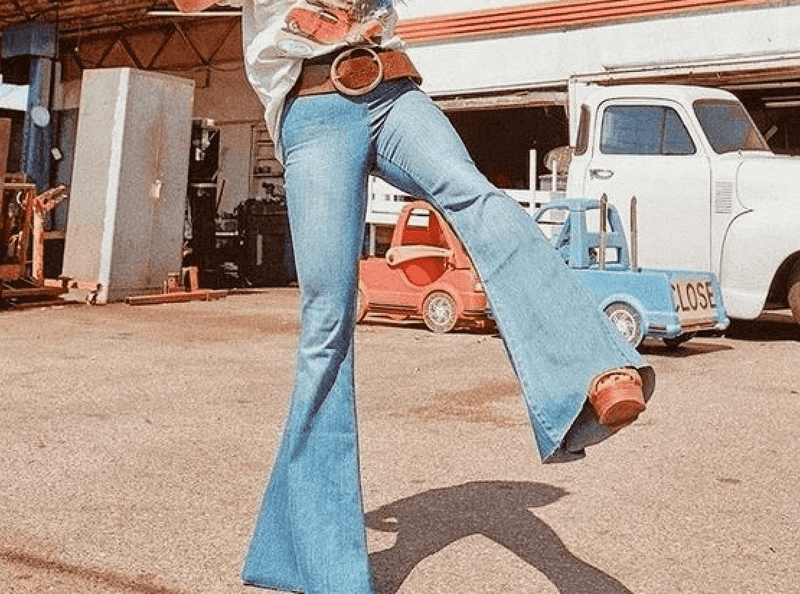
Picture this: a sun-drenched campus lawn adorned with vibrant bell-bottom jeans and swirling tie-dye shirts. The ’70s fashion scene was nothing short of a revolution, and college students were at the forefront, using their attire as a canvas for self-expression.
Bell-bottoms, with their dramatic flare, were more than just pants; they were a statement of rebellion and individuality. Remember those groovy patterns? Tie-dye was the perfect blend of art and fashion, embodying the era’s counterculture spirit.
It wasn’t just about looking good; it was about feeling free and unencumbered by societal norms. Walking across campus, you could spot these bold fashionistas from a mile away, their outfits as loud as the music they loved. The combination of bell-bottoms and tie-dye became a symbol of unity among students, connecting them in their shared quest for change and self-discovery.
2. Long Locks
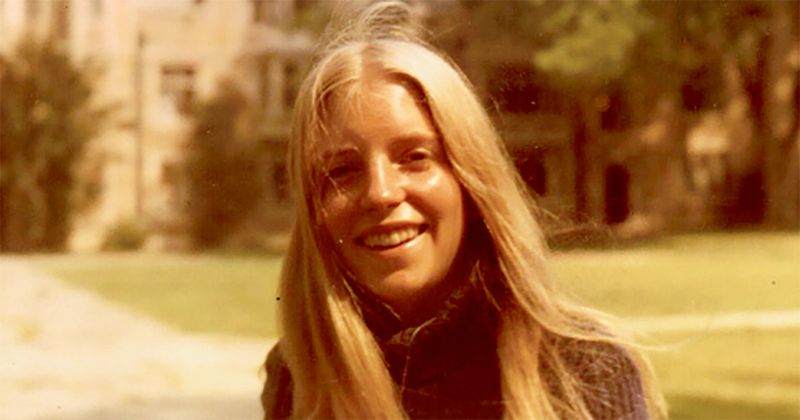
Long hair, don’t care! That was the mantra of the ’70s, and college students embraced it wholeheartedly. Both men and women let their hair grow wild and free, challenging the conservative grooming standards of previous generations.
It was as if each strand told a story of defiance and liberation. On any given day, you’d see students lounging on campus benches, their locks cascading like waterfalls over their shoulders, as they delved into their books or strummed a guitar.
This wasn’t just a style choice; it was a form of silent protest against the establishment. Long hair became a symbol of peace and love, reflecting the era’s spirit of harmony and unity. Every gust of wind seemed to whisper secrets to those who dared to listen, and in the world of academia, these free-flowing tresses represented a refusal to be boxed in by societal expectations.
3. Earth Day Enthusiasm
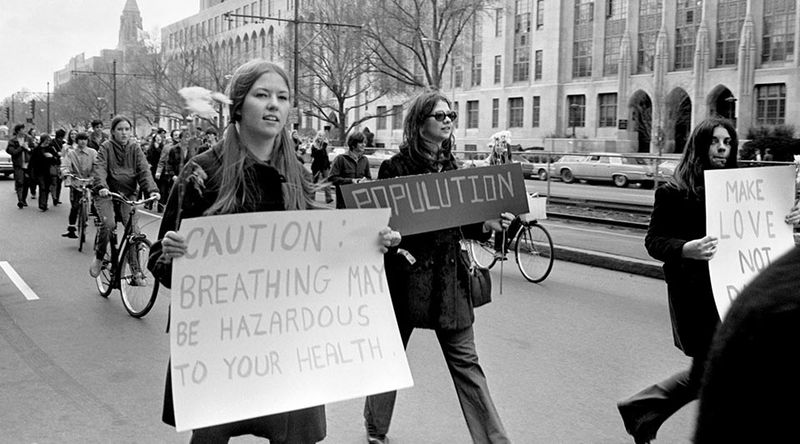
April 22, 1970, marked a significant milestone in college campuses across the U.S.—the first Earth Day. Students poured onto the lawns, brandishing signs and planting trees, their enthusiasm as boundless as their dreams. Amidst the chanting and the digging, there was a palpable sense of purpose. This wasn’t just another day; it was a movement, a call to action to protect the planet they cherished.
For many, it was their first taste of activism, and boy, did they savor it. The energy was contagious, spreading like wildfire among the crowd, igniting a passion for environmental stewardship that burned bright.
Those who participated in the inaugural Earth Day found themselves at the heart of a burgeoning movement, championing a cause that transcended the confines of the classroom. As they planted each sapling, they sowed seeds of change, nurturing a vision of a greener, more sustainable future.
4. Women’s Strike for Equality
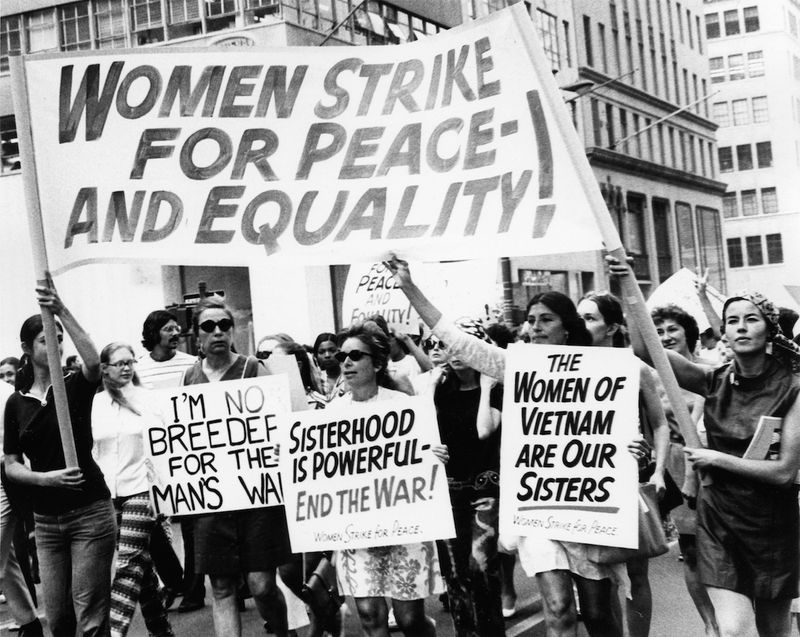
Step aside, patriarchy—the Women’s Strike for Equality in 1970 was here to shake things up! College campuses became epicenters of gender revolution, with students rallying for equal rights. The air was electric with chants and the rustle of protest signs, each demanding a future where women had equal opportunities.
As they marched, these trailblazers set the pace for a new era, one where gender disparities would no longer be tolerated. The strike wasn’t just an event; it was a statement of empowerment, a bold pronouncement that the times were indeed a-changin’.
Young women and men united, standing shoulder to shoulder, determined to dismantle the barriers of discrimination. Echoes of their activism reverberated through the halls of academia, leaving lasting imprints on the fight for gender equality. With each step taken, they paved the way for future generations to walk boldly in their footsteps.
5. Typewriter Days

Clackity-clack went the typewriters, filling dorm rooms with their rhythmic symphony. Before laptops and tablets, college students relied on these trusty machines to churn out term papers, each keystroke a testament to their dedication. The typewriter wasn’t just a tool; it was a rite of passage, a bridge between thought and ink.
As students hunched over their desks, fingers flying, a sense of accomplishment mingled with the scent of ink ribbons and paper. There was something profoundly satisfying about the weight of a finished page, the words manifesting in tangible form.
Sure, it required patience and precision, but it also taught resilience and resourcefulness. Those late-night typing marathons? They forged bonds stronger than any study group, with shared tales of lost pages and jammed keys. In the world of academia, the typewriter was both ally and adversary, demanding focus while rewarding persistence.
6. The Vinyl Experience
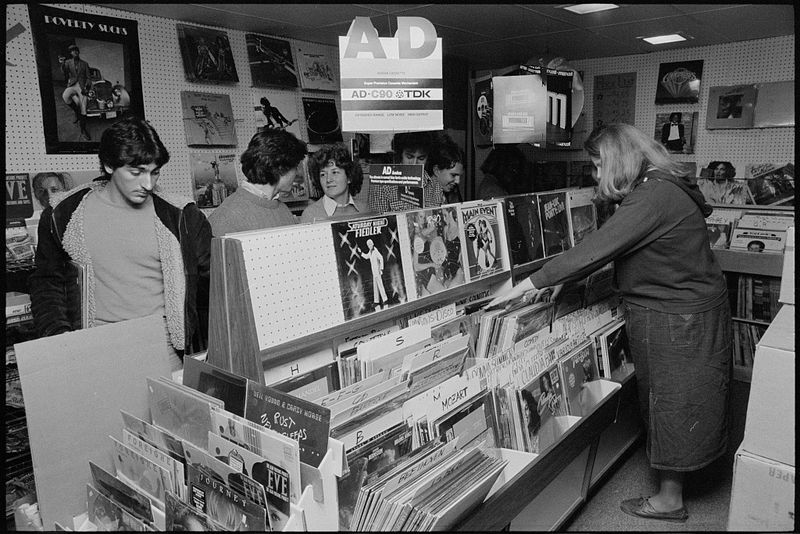
Spinning vinyl wasn’t just about music; it was about community. In the ’70s, dorm rooms transformed into sonic sanctuaries where students gathered to share their favorite records. The crackle of the needle meeting the groove was a prelude to countless hours of musical exploration and camaraderie. Album covers lined the walls like badges of honor, each telling a story of discovery and taste.
Listening sessions were an art form, with students swapping records and opinions, cultivating an eclectic mix of genres. It was a time of auditory adventure, where every track had the power to unite or ignite debate.
The ritual of flipping the record, the anticipation of a new song—these were moments of connection, transcending the walls of their dormitories. Within these musical enclaves, college students found solace and solidarity, their shared love of vinyl creating lifelong bonds as enduring as the records themselves.
7. Protests and Activism
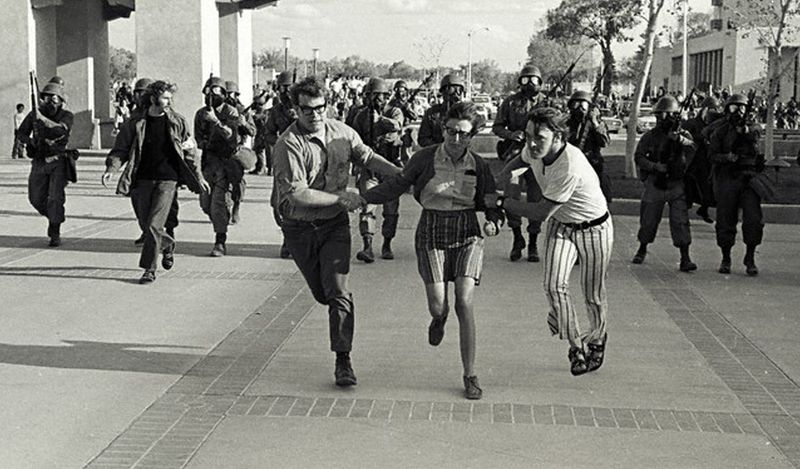
If you listened closely, you could almost hear the heartbeat of change in the ’70s. College campuses turned into arenas of activism, with students passionately protesting the Vietnam War and advocating for civil rights. The air buzzed with slogans and solidarity, as individuals of all backgrounds united for common causes.
Each protest was a symphony of voices, each sign a testament to the power of the collective spirit. Students marched with fervor, their footsteps echoing the calls for justice and peace. It wasn’t just about politics; it was about shaping the future they envisioned.
Amidst the chaos, a sense of camaraderie blossomed, galvanizing students to stand firm in the face of adversity. Their activism didn’t just shake the campus; it resonated across the nation, inspiring generations to come. Through courage and conviction, they proved that when united, even the smallest voices could make monumental noise.
8. Dorm Parties

If walls could talk, dorm rooms from the ’70s would sing tales of epic parties. These gatherings were more than just social events; they were rites of passage, where friendships were forged over bowls of punch and disco beats. The air was thick with laughter and the aroma of popcorn, each corner echoing with chatter and cheer.
As students danced the night away, they relished the freedom of youth, the thrill of abandoning textbooks for twirls on the makeshift dance floor. These parties were as much about spontaneity as they were about tradition, a celebration of the here and now. Decorations were improvised, but the spirit was authentic, a reflection of the decade’s carefree essence.
In these cozy enclaves, students discovered the art of balance, seamlessly blending study with revelry. For many, those dorm room parties became cherished memories, snapshots of a time when the world was their oyster, and every song was an anthem.
9. Fraternity and Sorority Events
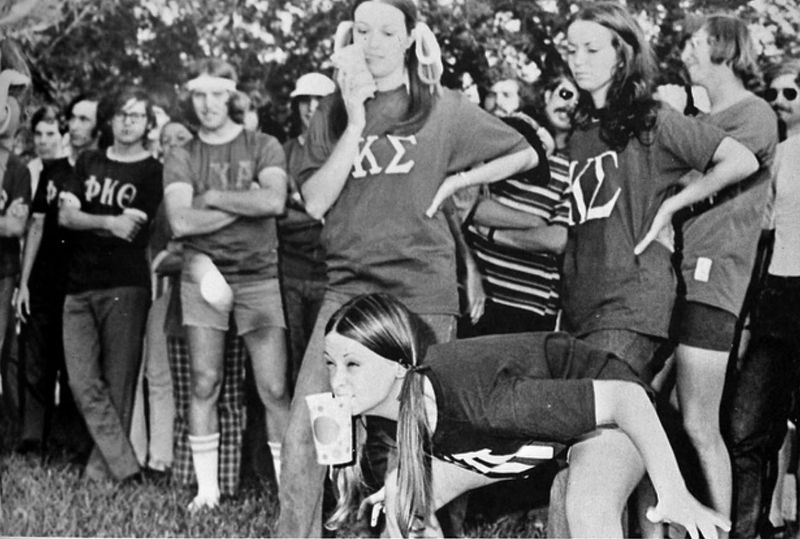
Ah, the glamour of fraternity and sorority events! These gatherings were the epitome of collegiate elegance, where students donned their finest attire and partook in rituals steeped in tradition. The ’70s saw these events evolve into lively affairs, combining formality with a dash of counterculture flair. As students mingled, they shared stories and laughter, their bonds forged in the crucible of shared experiences.
These events weren’t just social; they were cultural touchstones, where old traditions met new ideas. Music filled the air, and the clinking of glasses underscored conversations about everything from academics to activism.
It was a time to see and be seen, to connect and reflect. For many, fraternity and sorority events were highlights of the college calendar, a celebration of community and camaraderie. Within these gatherings, students discovered a sense of belonging, their collective histories intertwining with the rhythms of the ’70s.
10. Campus Concerts
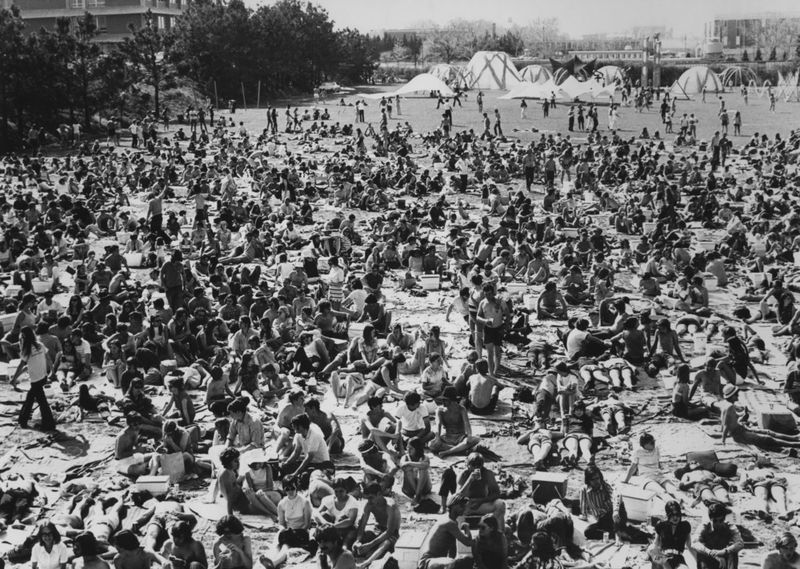
Nothing quite captured the spirit of the ’70s like a campus concert. These musical extravaganzas brought students together under the open sky, united by their love of rhythm and melody. The stage was a platform for emerging talent and established legends alike, each performance a chapter in the decade’s rich musical tapestry.
As guitars wailed and drums pounded, students lost themselves in the music, their bodies swaying to the beat with wild abandon. These concerts weren’t just events; they were experiences, where every note resonated with the energy of a generation in full bloom. The atmosphere was electric, an intoxicating mix of excitement and euphoria.
For many, these concerts were transformative, moments when the world faded away and only the music mattered. Within the crowd, friendships were forged, and memories were etched, immortalized by the magic of live performance. To the students of the ’70s, campus concerts were the heartbeat of their collegiate experience.
11. The Lava Lamp Phenomenon
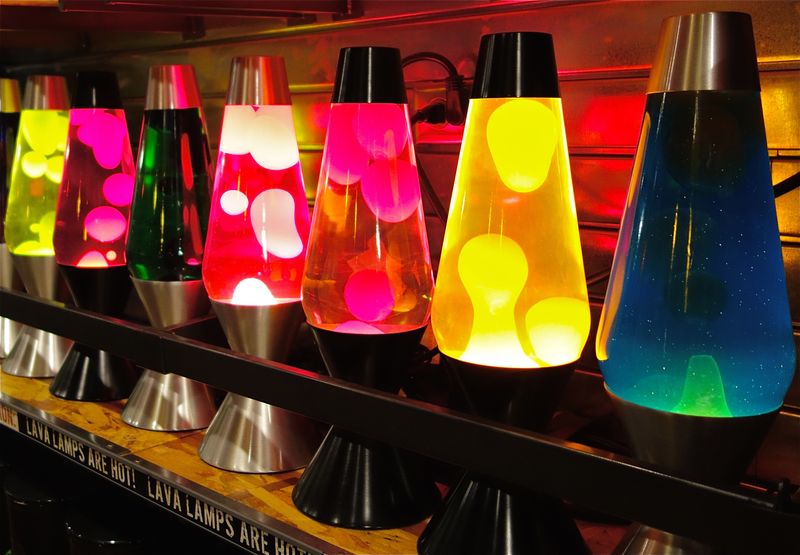
Ah, the humble lava lamp—a staple of ’70s dorm decor and a mesmerizer of minds. In those days, no college room was complete without one, its hypnotic dance of wax and light providing endless fascination. Students would gather around, entranced by the ever-changing forms, their conversations drifting like the colorful blobs within.
It wasn’t just a lamp; it was a statement piece, a silent companion to late-night study sessions and philosophical debates. For many, the lava lamp symbolized the era’s psychedelic spirit, a nod to the counterculture that shaped the decade. Its warm glow created an ambiance of relaxation, a refuge from the hustle and bustle of college life.
As students lounged on beanbags, the lava lamp cast its soothing spell, encouraging introspection and creativity. In the world of academia, it was both a beacon of chill and a catalyst for inspiration, illuminating the path to groovy enlightenment.
12. Beanbag Chairs
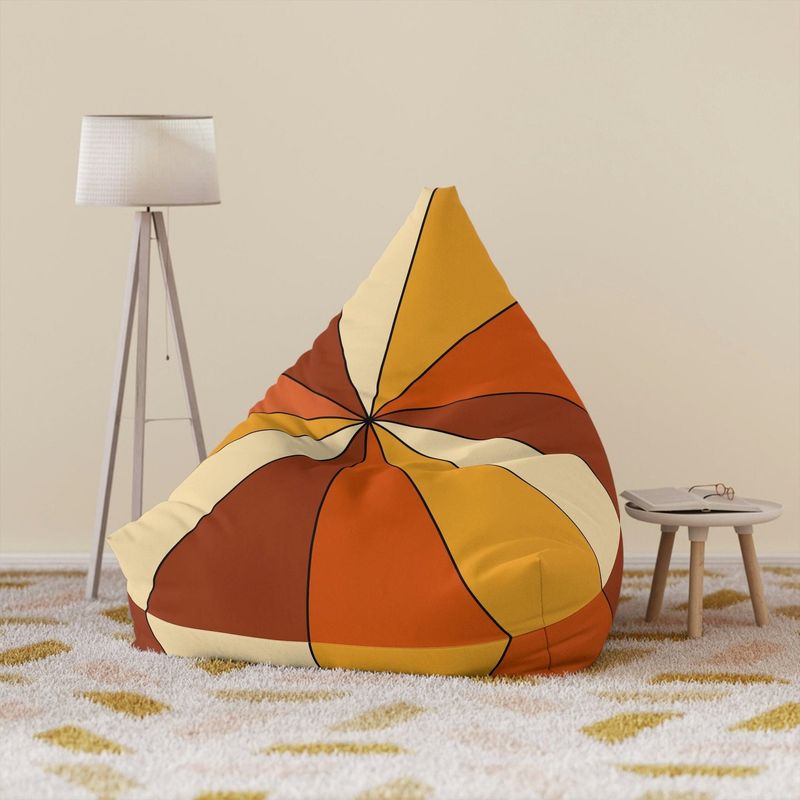
If comfort had a shape in the ’70s, it would surely be a beanbag chair. These squishy seats became synonymous with college life, providing the perfect perch for students seeking respite from the demands of academia.
Beanbags were more than just chairs; they were havens of relaxation, where one could sink in and let the weight of the world melt away. In dorm rooms across the nation, these colorful blobs dotted the landscape, each one a throne of coziness.
Students would huddle on them, books in hand, as they tackled the subjects of the day or simply unwound with friends. The beanbag chair was a symbol of the decade’s laid-back ethos, embodying the essence of casual cool. For many, it was the ultimate study buddy, a companion in times of need. Whether for pondering life’s mysteries or catching a quick nap, beanbags were the unsung heroes of ’70s college life.
13. Campus Graffiti
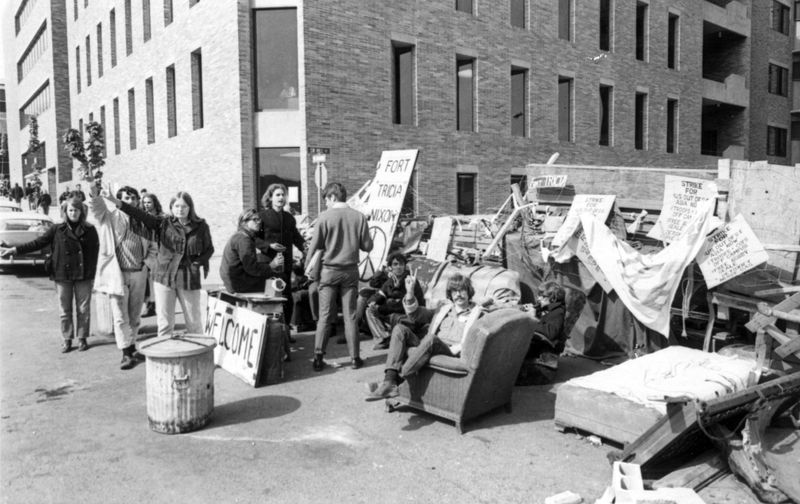
Walls weren’t just structural necessities in the ’70s; they were canvases for creativity. The decade saw an explosion of campus graffiti, as students transformed blank spaces into vibrant displays of expression. This wasn’t mere vandalism; it was art with a message, a reflection of the social and political climate. Each spray of paint was a mini-rebellion, a stroke of individuality in a sea of conformity.
As students added their marks, they contributed to a collective tapestry that told stories of resistance, hope, and unity. The walls spoke volumes, echoing the sentiments of a generation unafraid to voice its truths.
In every piece of graffiti, there was a sense of urgency, a call to action that resonated long after the paint had dried. For many, these walls were more than just surfaces; they were platforms for change, where ideas took shape and conversations ignited. Within the colorful chaos, students found their voices—and left indelible marks on history.
14. Platform Shoes
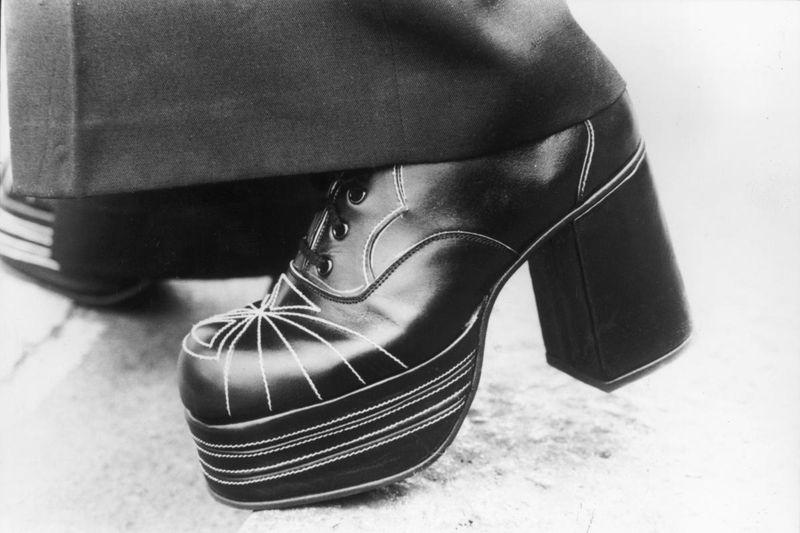
Step up your style game with platform shoes, the footwear of choice for ’70s college students. These towering soles weren’t just about gaining height; they were about making a statement. In an era where fashion was a form of self-expression, platforms allowed students to rise above the ordinary.
Walking across campus in these bold creations, students turned heads and made waves, each step echoing with confidence and flair. Platform shoes came in all shapes and colors, from disco-ready metallics to laid-back leather.
They were the exclamation point in any outfit, adding a touch of drama to every ensemble. As students strutted their stuff, they embraced the spirit of the decade, where individuality was celebrated and creativity knew no bounds. Platform shoes weren’t just footwear; they were an attitude, a declaration of independence from the mundane. For those who wore them, every day was a fashion runway—a chance to shine and strut with pride.
15. The Mini Refrigerator Craze
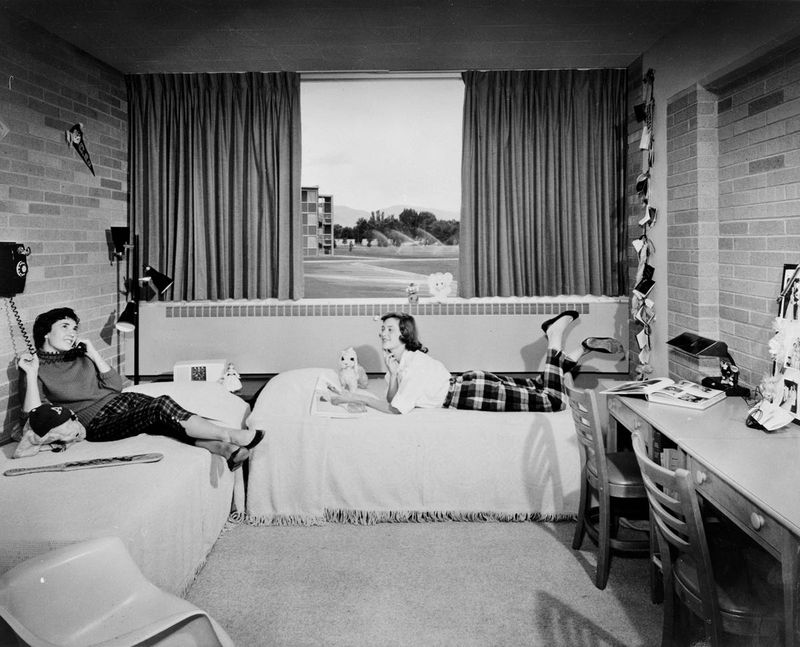
Chill out, man—with a mini refrigerator, no dorm room was complete without one. These compact coolers became essential in the ’70s, keeping snacks and drinks at the perfect temperature for late-night study sessions or impromptu gatherings. The mini fridge wasn’t just convenient; it was a sign of the times, a nod to the growing need for personal space and independence.
Tucked into cozy corners, they hummed quietly, a beacon of refreshment for weary students. Inside, an array of sodas, sandwiches, and the occasional Jell-O awaited, ready to fuel both body and mind.
For many, the mini fridge was more than an appliance; it was a touch of home in an unfamiliar setting, a reminder of comfort and convenience. In an era where sharing was key, the mini fridge facilitated connections, whether over a shared soda or a late-night snack run. It was a small but mighty presence, a cornerstone of ’70s dorm life that kept the good times—and the cold drinks—flowing.
16. The Polaroid Moment

Say cheese! The Polaroid camera was the social media of the ’70s, capturing moments in an instant and bringing joy to college campuses everywhere. Students didn’t just take photos; they created memories, each snap a freeze-frame of fun and friendship. The click, the whirr, the anticipation—it was all part of the magic.
As the image developed before their eyes, students laughed and reminisced, their spontaneous snapshots becoming cherished keepsakes. The Polaroid wasn’t just about the pictures; it was about the experience, the thrill of immediate gratification in a world where patience was often required.
These photos adorned dorm walls, each one a story waiting to be told. In an era where everything seemed to move quickly, the Polaroid allowed students to pause, capture, and remember. It was more than a camera; it was a time machine, a portal to the past that kept the spirit of the ’70s alive in every image.
17. Comic Books and Counterculture
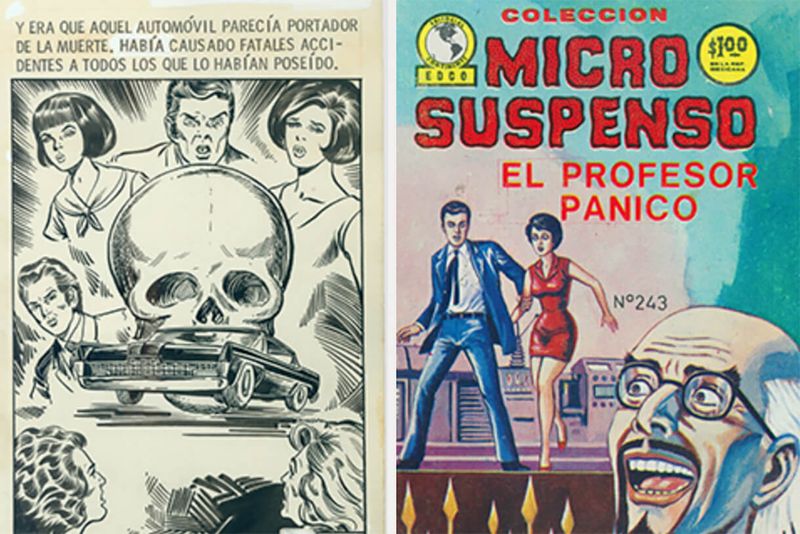
Flip through the pages of rebellion with comic books, the underground literature of the ’70s college scene. These illustrated narratives didn’t just entertain; they educated and inspired, offering commentary on everything from politics to pop culture.
In dorm rooms filled with posters and psychedelic decor, students immersed themselves in the worlds of superheroes and antiheroes, finding parallels to their own lives. Comic books became a gateway to the counterculture movement, their vibrant panels reflecting the social upheaval of the times. As students read and shared these tales, they discovered new perspectives and a sense of camaraderie with like-minded enthusiasts.
The comic book wasn’t just a pastime; it was a mirror to society, a medium through which creativity and critique converged. In the hands of college students, these stories became a catalyst for change, igniting discussions and inspiring action. Within the colorful pages, they found a voice—and a vision for a better tomorrow.
18. The Iconic Backpacks
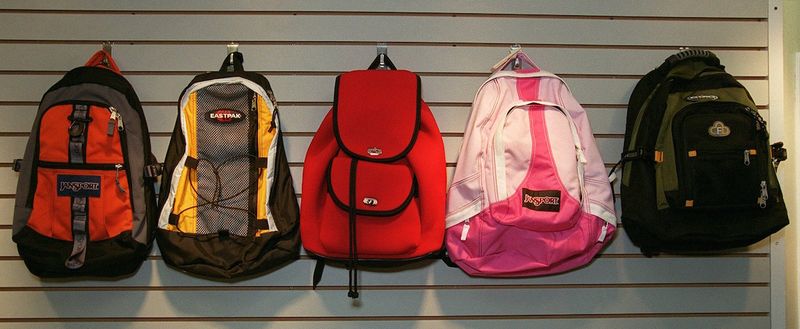
Backpacks weren’t just for carrying books; they were a fashion statement in the ’70s. These bags came in every hue of the rainbow, each one as unique as the student who wore it. As college campuses buzzed with activity, backpacks became essential companions, holding textbooks, notebooks, and perhaps a secret stash of snacks.
The backpack wasn’t just practical; it was personal, a reflection of the owner’s style and sensibility. With every stitch and strap, these bags told a story of individuality and adventure. In an era where self-expression was key, the backpack was more than a bag; it was an extension of the student.
As they traversed the verdant pathways of academia, these vibrant carriers added a splash of color to the landscape, a testament to the diverse tapestry of college life. Whether slung over one shoulder or worn with pride, the backpack was an icon of the ’70s, a symbol of the journey through knowledge and self-discovery.
19. The Skateboarding Boom
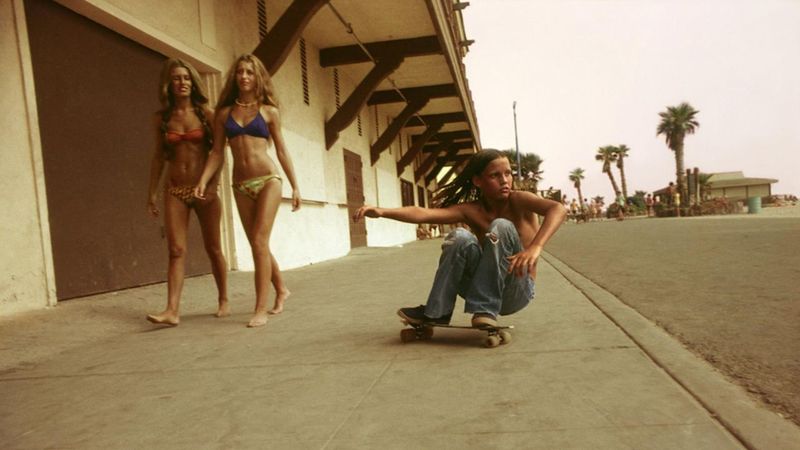
Roll with it! Skateboarding made waves in the ’70s, with college campuses serving as the ultimate playground for this new sport. Students zipped down paths and plazas, their boards an extension of their free-spirited personalities. Skateboarding wasn’t just a hobby; it was a lifestyle, a celebration of agility and balance in a world that often felt precarious.
As students honed their skills, they formed a tight-knit community, united by their love of the ride. Tricks and stunts were shared and perfected, each attempt a testament to determination and daring. The sound of wheels on pavement became a familiar soundtrack, a rhythmic reminder of the decade’s dynamic energy.
For many, skateboarding offered a sense of freedom and escape, a chance to break away from the constraints of campus life. In the ’70s, skateboarding was more than a sport; it was an art form, a moving testament to the power of innovation and individuality.
20. The Mustache Movement
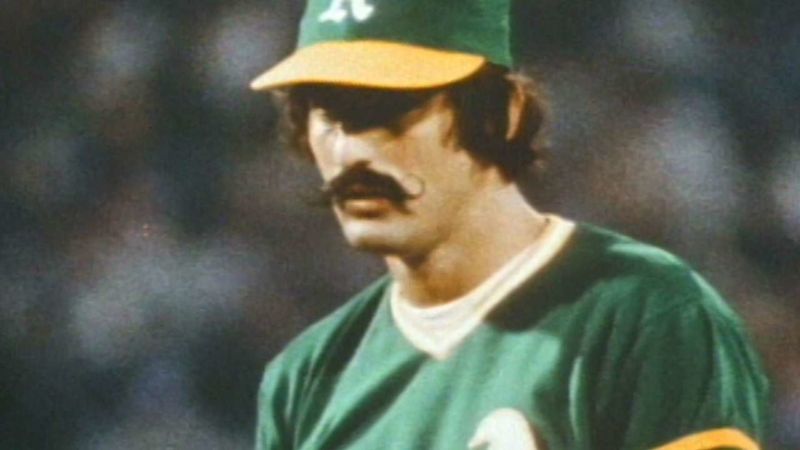
Mustaches weren’t just facial hair in the ’70s; they were a statement of style and individuality. College students embraced this trend with gusto, transforming their upper lips into canvases for creativity. The mustache became a symbol of maturity and rebellion, a nod to iconic figures of the era. As students lounged on campus lawns, their mustaches twirled and waxed to perfection, sparking admiration and envy alike.
It wasn’t just about fashion; it was about identity, a way for students to assert their uniqueness in a sea of conformity. Each mustache was a masterpiece, meticulously groomed and proudly displayed.
In the ’70s, these whiskered wonders were more than just hair; they were badges of honor, a testament to the carefree spirit of the decade. For those who wore them, mustaches were more than a trend; they were a part of who they were, a legacy of style that endures even today.
21. The Coffeehouse Culture
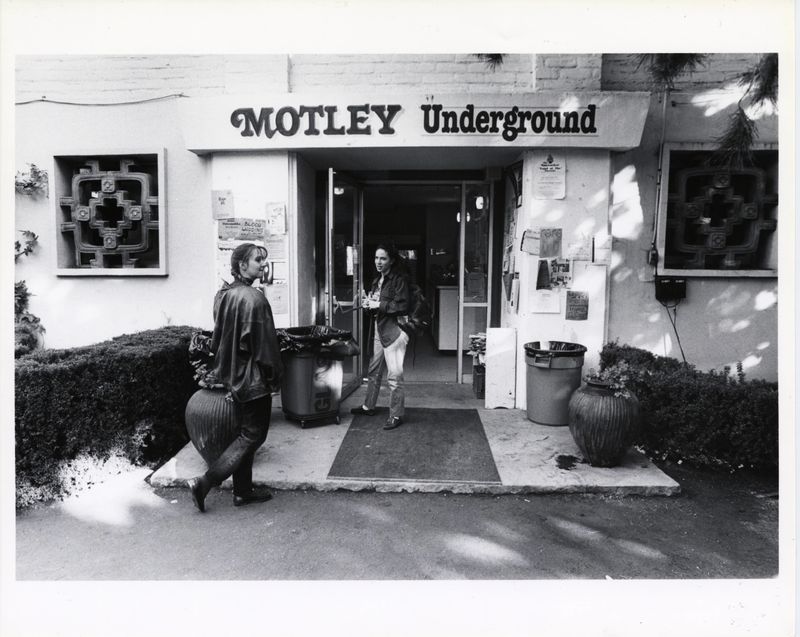
Perk up! The ’70s saw the rise of campus coffeehouses, where students gathered to sip, study, and socialize. These cozy nooks became the heart of college life, offering a caffeine-fueled refuge from the hustle and bustle. As the aroma of freshly brewed coffee filled the air, students huddled over steaming mugs, their conversations as stimulating as the drinks.
The coffeehouse wasn’t just a venue; it was a vibe, a place where ideas flowed as freely as the java. Whether debating philosophy or crafting poetry, students found inspiration in these intimate settings, their collective creativity bubbling over like a pot of percolating brew.
In the ’70s, coffeehouses were more than just spots to caffeinate; they were incubators of thought and friendship, where the seeds of innovation were planted and nurtured. For those who frequented them, these havens were a home away from home, a sanctuary of warmth and wit amidst the academic grind.
22. DIY Fashion
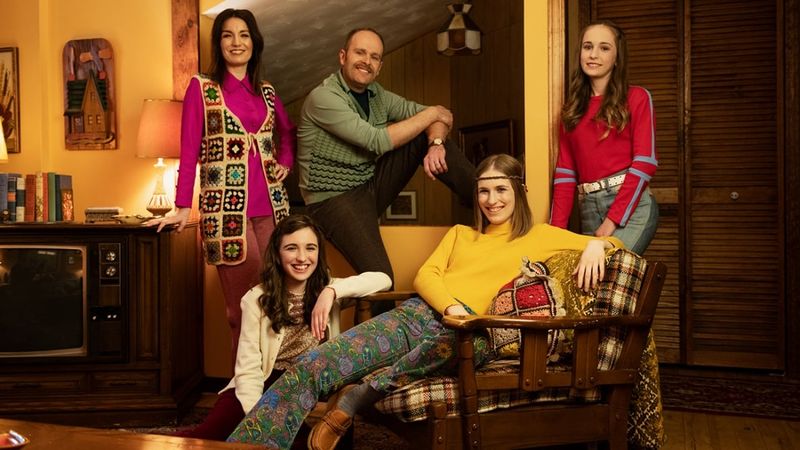
Get crafty with DIY fashion, a hallmark of ’70s college creativity. Students took to their sewing machines and scissors, transforming ordinary garments into one-of-a-kind masterpieces. Denim jackets became canvases for patches and embroidery, each stitch a declaration of individuality. The DIY movement wasn’t just about saving money; it was about making a statement, a rebellion against mass-produced monotony.
As students adorned their clothes with flair, they embraced the freedom to express themselves through fashion. Dorm rooms turned into ateliers of innovation, brimming with fabric and imagination.
The resulting outfits were as unique as the students who wore them, each piece a testament to creativity and resourcefulness. In the ’70s, DIY wasn’t just a trend; it was a philosophy, a belief in the power of personal expression. For those who embraced it, the DIY approach to fashion was more than a hobby; it was a way of life, a celebration of ingenuity and individuality.
